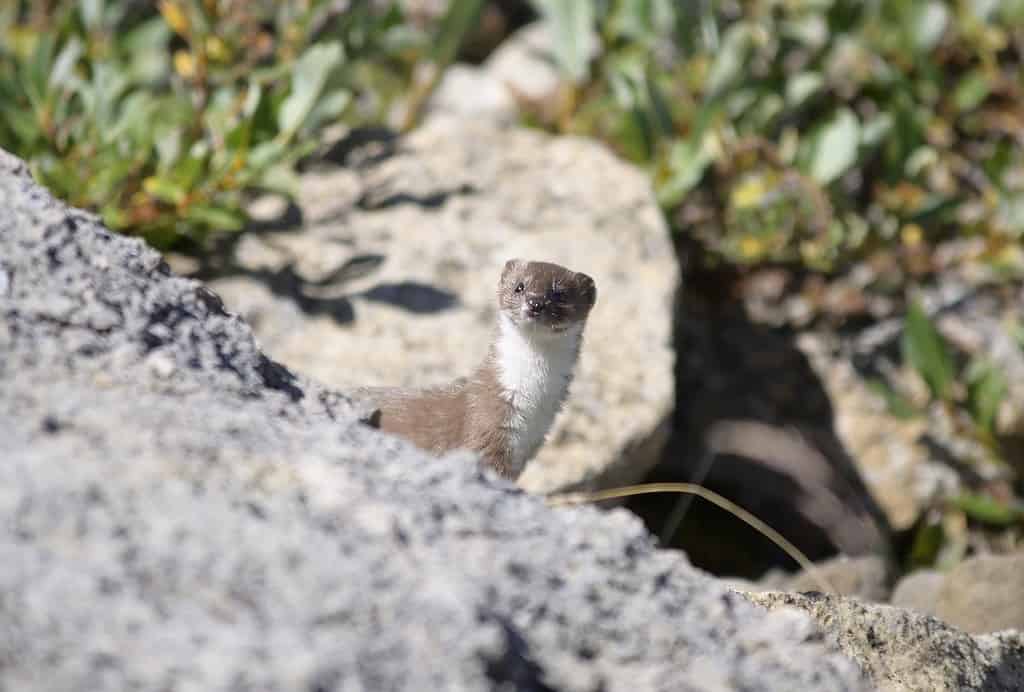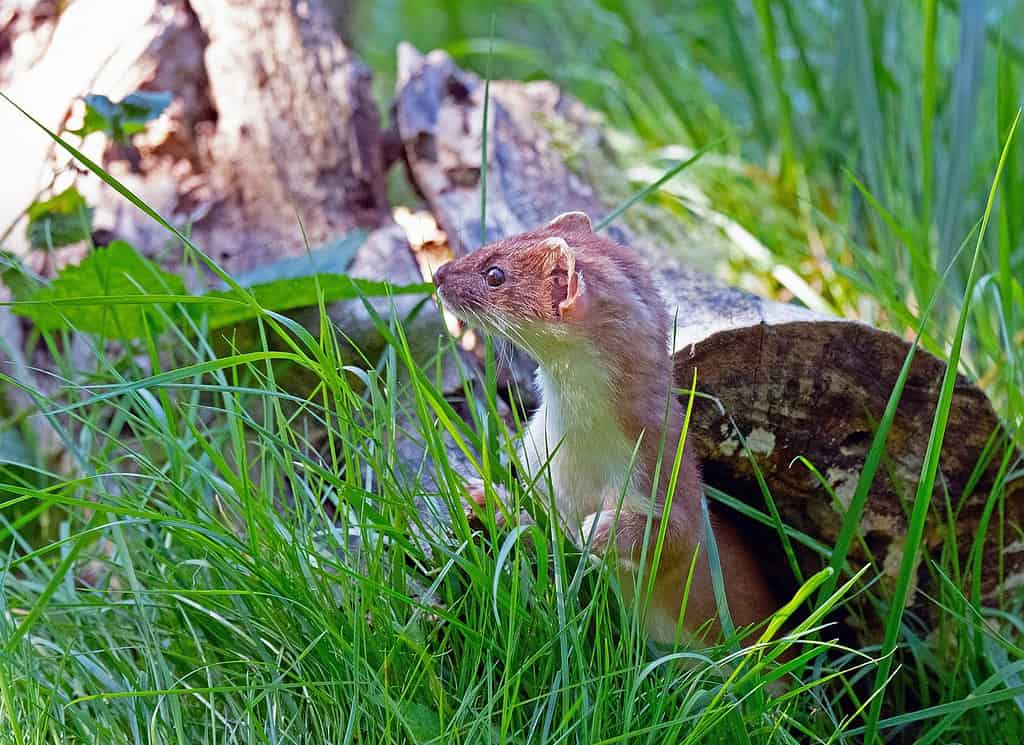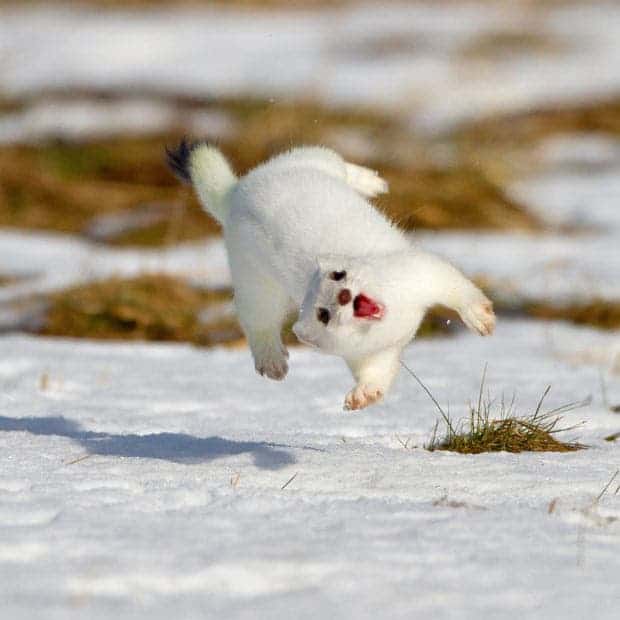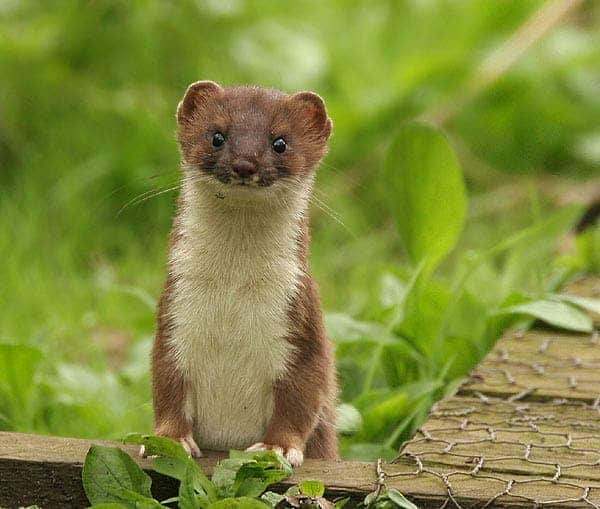When you first catch sight of the stoat (Mustela erminea), you may underestimate its prowess. Weighing as little as 200 grams, its size belies an energetic, agile creature well-adapted to its challenging habitat.
Stoats, a member of the weasel family, are found across North America, Europe, and Asia. They’re adept at survival, thriving in landscapes from woodlands to tundra.
In fact, the stoat is so adaptable that scientists have sounded the alarm, marking the weasel-like creature out as one of the most invasive species in the world.
Stoat’s the name, adaptation’s the game

As the seasons change, so too does the stoat’s fur coat. In summer, its coat is brown, providing camouflage against the backdrop of verdant landscapes. When winter comes, the stoat transforms into a snowy white creature, known as the ‘ermine’, allowing it to blend seamlessly with the icy terrain.
Such adaptability is not only skin-deep. Their diet varies depending on availability, from small mammals like rabbits and voles to birds and insects. Though smaller than their prey, stoats are relentless hunters.
They follow their target with a fervor that makes them excellent at controlling pest populations in their regions. That’s why they were introduced in New Zealand in the late 19th century in the first place — but this went horribly wrong, as you shall learn shortly.
Stoats like to keep to themselves
Solitary by nature, stoats stake out large territories and communicate through scent marking. They maintain a variety of dens throughout their territory, making them true nomads of the animal kingdom.
If you ever feel your life is full of unexpected turns, spare a thought for the stoat. They never know where they may end up next.
When it comes to family life, stoats are rather remarkable. They’re one of the few mammals that can delay implantation. After mating, the female stoat can hold fertilized eggs in a state of suspension for up to ten months before they start to develop. This process is nature’s way of ensuring the young are born at the best time, usually when there is plenty of food.
Newborn stoats, or ‘kits’, are born blind and hairless. It takes eight weeks before they are ready to venture out into the world. They learn quickly, exhibiting the characteristic stoat hunting techniques at just ten weeks. It’s a tough learning curve, but an essential one for these miniature predators.
Why stoats are such an invasive species?

Also known as the short-tailed weasel, this little animal is nominated as one of the world’s 100 most invasive species. Since this list is actually dominated by plants and insects, this cute little guy actually ranks as one of the top 10 invasive mammals.
Why is that? Stoats are very adaptive, thriving in most climates. They are also opportunistic predators, which hunt efficiently and check every available burrow or crevice for food. These aren’t picky eaters, for sure.
Because of their larger size, male stoats are less successful than females in pursuing rodents far inside tunnels. They also regularly climb into trees to check for birds’ nests.
The stoat reputedly immobilizes prey such as rabbits by mesmerizing them with a “dance”, though this has not been researched thoroughly.
The stoat’s habitat range is huge. They can be found throughout virtually all of Europe, from the southern warm climate of Portugal to the frigid heights of Scandinavia, but also in Greenland and the Canadian and Siberian Arctic islands south to about 35°N.
Stoats in North America are found throughout Alaska and Canada, as well as in most of the northern United States, including central California, northern Arizona, northern New Mexico, Iowa, the Great Lakes region, New England, and Pennsylvania. They are also found in many parts of Asia and even New Zealand.
All of these characteristics make the stoat highly adaptable and quite successful in just about any environment you introduce it. Often, they can be too successful for their own good — especially when they reach an island ecosystem with very few if any endemic predators.
New Zealand’s stoat problem
The stoat was brought to New Zealand to take care of the rabbit invasion in the 1880s. Rabbits are also invasive in the island country. What could go wrong when you try to counter an invasive species by introducing another invasive species?
The introduction of stoats was opposed by scientists in New Zealand and Britain, but their warnings were ignored — as usually happens.
After only six years, all bird populations faced a rapid decline, including the nation’s iconic kiwis. To this day, the effects have been devastating on virtually all rodent and bird species — a testimony that introducing a ‘foreign’ animal in a different ecosystem is not something to be taken lightly.
Stoat skins are prized by the fur trade, especially for their winter coats. The fur from the winter coat is referred to as ermine. But this is in no way a solution to ending the invasive problems of the stout — two wrongs don’t make a right!
That’s a hard lesson that we, as the most invasive species on the planet, keep failing. In Britain, where stoats are actually native, the population plummeted when rabbits, their main prey, were decimated by myxomatosis. The disease is caused by the Myxoma virus, introduced in the UK in the 1950s intentionally as a control measure for rabbit pests to protect grazing.
But what’s odd is that stoats in New Zealand carry greater genetic diversity than those in Britain, according to a 2015 study performed by researchers at the Universities of Exeter, Auckland, Griffith and Canberra and at Landcare Research, New Zealand. That’s highly unusual since introducing a new species in a foreign ecosystem is usually associated with a loss in genetic diversity.
“Invasive stoats pose a severe threat to native birds in New Zealand. The discovery that stoats here have higher genetic diversity than in their British homeland is intriguing. It raises the question of whether or not weasels, which were also introduced to New Zealand in a misguided attempt at rabbit control, may also have different patterns of genetic diversity in NZ than they do in the UK,” said Professor Mick Clout from the University of Auckland.
But although it was people that caused the stoat problem, it is the small furry creatures that must suffer. The eradication of stoats is a key point in New Zealand’s ambitious goal to be predator-free by 2050. New Zealand regularly organizes chemical drops and trapping missions to get rid of them en masse.
In 2022, Dr. Andrew Veale from the wildlife ecology and management team at Manaaki Whenua Landcare Research in New Zealand sequenced the stoat genome for the first time. He claims this information can be used to design targeted poisons that only affect the stoats.
Perhaps, in the end, the stoat’s famous adaptability may be no match to our machinations.
Next time you’re in the countryside, keep an eye out. You might just spot a flash of brown or white, a fleeting glance of one of nature’s most agile nomads—the stoat.




